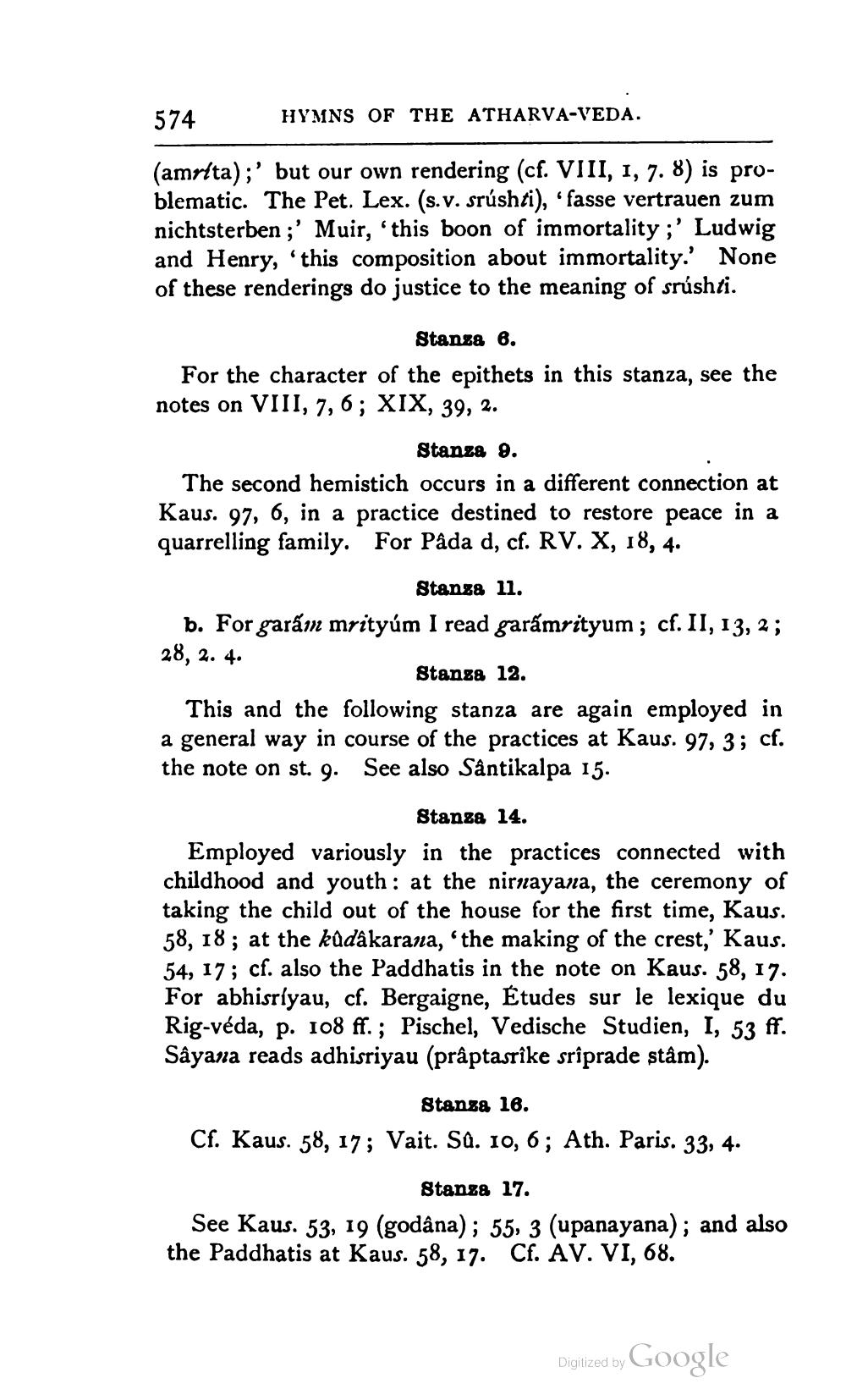________________
574
HYMNS OF THE ATHARVA-VEDA.
(amrita);' but our own rendering (cf. VIII, 1, 7. 8) is problematic. The Pet. Lex. (s.v. srúshti), 'fasse vertrauen zum nichtsterben ;' Muir, 'this boon of immortality ;' Ludwig and Henry, 'this composition about immortality.' None of these renderings do justice to the meaning of srushti.
Stanza 6. For the character of the epithets in this stanza, see the notes on VIII, 7, 6; XIX, 39, 2.
Stanza 9. The second hemistich occurs in a different connection at Kaus. 97, 6, in a practice destined to restore peace in a quarrelling family. For Pâda d, cf. RV. X, 18, 4.
Stanza 11. b. For garam mrityum I read garámrityum ; cf. II, 13, 2; 28, 2. 4.
Stanza 12. This and the following stanza are again employed in a general way in course of the practices at Kaus. 97, 3; cf. the note on st. 9. See also Sântikalpa 15.
Stanga 14. Employed variously in the practices connected with childhood and youth: at the nirnayana, the ceremony of taking the child out of the house for the first time, Kaus. 58, 18; at the kudakarana, 'the making of the crest,' Kaus. 54, 17; cf. also the Paddhatis in the note on Kaus. 58, 17. For abhisrlyau, cf. Bergaigne, Études sur le lexique du Rig-véda, p. 108 ff.; Pischel, Vedische Studien, I, 53 ff. Sâyana reads adhisriyau (prâptastîke sríprade stâm).
Stanza 16. Cf. Kaus. 58, 17; Vait. SQ. 10, 6; Ath. Paris. 33, 4.
Stanza 17. See Kaus. 53, 19 (godâna); 55, 3 (upanayana); and also the Paddhatis at Kaus. 58, 17. Cf. AV. VI, 68.
Digitized by Google




